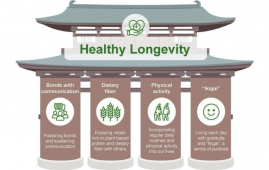

A novel protein risk score created to predict the probability of death in people with heart failure (HF) has shown satisfactory calibration and may assist doctors in better stratifying mortality risk in these patients. Annals of Internal Medicine published the score.
Heart failure is a complex clinical illness that is associated with a high mortality rate. Current risk classification techniques are restricted in their ability to represent the molecular complexity of the HF condition while also demonstrating therapeutic value. Although high-throughput proteomics has the potential to improve risk prediction, its use in clinical practice to assist the management of patients with heart failure is dependent on validation and proof of clinical benefit.
Using a community-based cohort of 7,289 plasma proteins from 1,351 patients with heart condition, researchers from the National Institutes of Health developed and validated a protein risk score to stratify mortality risk in people with heart failure.
For the protein risk score, 38 distinct proteins were chosen from the development cohort. When compared to the clinical model, the protein risk score revealed better calibration, reclassified mortality risk, particularly at the extremes of the risk distribution, and demonstrated improved clinical value.
These findings, according to the researchers, anticipate the clinical relevance of large-scale proteomic assays for precision risk prediction in HF. This tool may assist doctors in identifying candidates for quick drug titration or patients with advanced HF who are at high risk of severe outcomes and should be considered for mechanical circulatory support or transplantation.
For more information: Development and Validation of a Protein Risk Score for Mortality in Heart Failure, Annals of Internal Medicine
more recommended stories
 High-Intensity Training and Oxidative Stress Insights
High-Intensity Training and Oxidative Stress InsightsNew Evidence Linking High-Intensity Training and.
 36-Week Pre-eclampsia Screening May Reduce Term Risk
36-Week Pre-eclampsia Screening May Reduce Term RiskA New Preventive Strategy for Term.
 Cardiovascular Risk and Sudden Cardiac Death in Diabetes
Cardiovascular Risk and Sudden Cardiac Death in DiabetesRising Sudden Cardiac Death (SCD) Risk.
 Poor Kidney Function and Alzheimer’s Biomarkers Explained
Poor Kidney Function and Alzheimer’s Biomarkers ExplainedPoor kidney function may influence levels.
 Perinatal Mental Health Challenges Highlighted in New Study
Perinatal Mental Health Challenges Highlighted in New StudyMental Health Challenges in New Parents:.
 Walking Speed Before Hip Replacement Predicts Recovery
Walking Speed Before Hip Replacement Predicts RecoveryNew Evidence Points to a Simple,.
 Neuroblastoma Drug Combo Extends Survival in Models
Neuroblastoma Drug Combo Extends Survival in ModelsA Promising Shift in High-Risk Neuroblastoma.
 How Soybean Oil Impacts Weight Gain and Metabolism
How Soybean Oil Impacts Weight Gain and MetabolismWhy Soybean Oil May Affect Metabolism.
 Coffee and Cognitive Function: Evidence Review
Coffee and Cognitive Function: Evidence ReviewA new narrative review in Cureus.
 World Summit Outlines Core Principles for Healthy Longevity
World Summit Outlines Core Principles for Healthy LongevityWhy Healthy Longevity Demands a New.

Leave a Comment